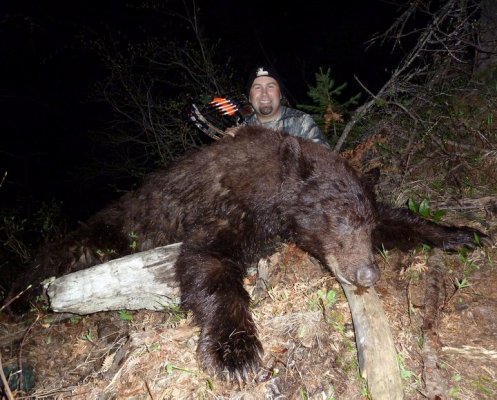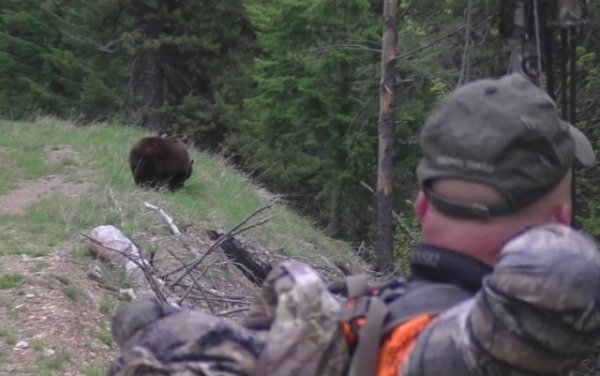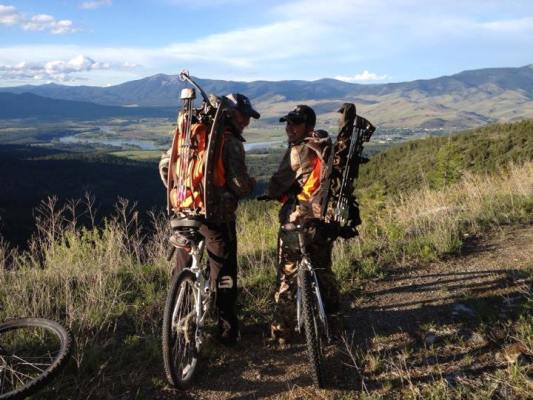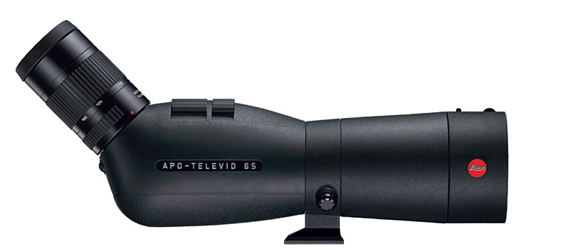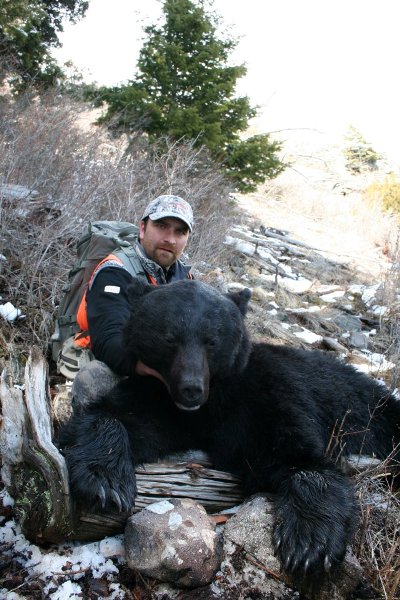LAST UPDATED: May 1st, 2015
After another long, lingering winter, the arrival of spring hunting seasons is a welcomed time. And nothing seems to help dust off the “off-season” blues like hunting for spring black bear. The spring season brings a time of growth, new life, and an abundance of encounters with wildlife when we step out into God’s country. There’s no doubt a spring black bear hunt can provide some of the most exciting memories of the season. However, the same hunts can also be some of the most frustrating moments in the backcountry as we experience the highs and lows of successful black bear hunting. So, how can we tip the odds for success on bears in our favor? The answer can be found in the following 7 habits. Follow them, and you will be well on your way to filling your spring bear tag.
Black bear success isn’t easy, especially when spot-and-stalk is the name of the game. However, with the right game plan, the results can turn out great!
For many, black bear hunting consists of sitting over a bait site that is being frequented by local bears. Such hunting draws folks from around the country to places like Idaho, where baiting for bears is king. However, in states like Montana, where baiting for bears is illegal, spot-n-stalk hunting methods are the norm. While baiting for bears is no easy task, and weeks of grueling work is involved to make it happen, I have to tip my hat to the hunter that effectively gets the job done on black bears at eye level…one on one…spot-n-stalk style.
Several guys come to mind when thinking about passionate bear hunters. One is Jason Matzinger. I was immediately impressed when I witnessed Jason’s passion for hunting spring black bear in Montana several years ago. Jason is the host of “Into the High Country with Jason Matzinger” airing on the Sportsman Channel. Jason admits that spot-n-stalk hunting for spring black bear ranks at the top of his list. He displays the habits of a highly effective bear hunter. His methods and techniques allow him to consistently be successful on black bear hunts each spring. The guys at Trophy Taker in Plains, MT also know what it takes to get the job done on bears in the spring. Zach Butcher of Trophy Taker hunts some of the toughest country each year in search of big black bears. Zach and Jason are both quick to share a few of their habits that have led to more effective black bear hunting.
#1 Finding the Food
Like many of the animals we pursue, bears will live and die by their drive to fill their stomachs. Finding the preferred food source is critical. And not just finding the kind of food source that bears typically feed on…but finding the exact food source that bears are feeding on right now. “In the early spring, focus on the south facing slopes first,” says Matzinger. “These are the first areas to be free of snow and will green up the fastest, concentrating the bears into smaller areas. This makes for one of the best times to locate and ultimately kill that bear, because they will stick close to that food source. As the season progresses and temperatures begin to warm up, more and more fresh grass is exposed from the winter snow. Bears are like any other animal that grazes…they want the freshest, greenest grass chutes they can find. So concentrate your efforts at snow line as the snow works its way back up the mountains.
Bears, like any animal, live and die by their stomachs. When hunting without the aid of a bait pile it is important to always locate the freshest food sources available. Do that and the bears will find you.
Zach Butcher of Trophy Taker in Plains, MT also places a big emphasis on hunting adequate food sources for bears; particularly the freshest food available. “Find areas that have good grass, like logging roads and old clear cuts,” says Butcher. “Some of the hotspots may include a spring that has good cover around it, but is open enough to glass from a distance. I also look for deep, dark draws with old growth timber close to open hill sides or clear cuts. Bears like the security of the dark draws, but stay close to the open hill sides for the green grass.”
#2 Being Patient
You’ve heard it said before, “Patience is a virtue.” And nothing could be truer for the hunter…particularly the bear hunter! Matzinger recommends being patient and spending lots of time behind high quality optics. “I will literally spend 4-5 hours spotting and glassing one hillside with my binoculars before moving to a new vantage point. I will make a grid system, starting at one point and working my way across the hillside in a methodical pattern making sure to cover all the areas. As soon as I get done, I start all over again. So be patient!”
#3 Hunting Low-Pressure Areas
“Go where people aren’t,” says Matzinger. “This sounds pretty standard but it really took me years to get past this one. One evening after work my camera guy (Jeff) and I, decided to go and try one of the popular bear areas around Bozeman. When we arrived at the trailhead there were 7 other trucks already there. I was so discouraged at this that I decided that for the rest of the year I was going to just go where I knew there was no people around. That’s when I found my best bear spots!” The bottom line is hunting pressure on the bear population is a deal breaker. Like other game animals, bears simply won’t tolerate the pressure from people…particularly during hunting hours. Get away from the crowds and you just might find yourself in an overlooked hotspot for your next bear.
Accessing “out of the way areas” sometimes requires “off-the-wall” techniques. Use whatever means you have to get where other hunters aren’t and the bear are.
#4 Staying Committed
A commitment to the relentless pursuit of black bear success just might be one of the deadliest habits one can develop. “Be committed,” says Butcher. “If you find an area that has good bear sign in it, don’t give up on it just because you may not see any bears on your first sit. I have often been skunked several evenings in a row and left wondering if I should look in a different area. Then, somehow I convince myself to go back for one more evening and end up seeing 3 or 4 bears.” Commitment is the key. Plan your hunt…and hunt your plan. If you’ve done your homework, and know that there are bears in the area…stick with it. Your commitment will pay off.
# 5 Glassing…Glassing…and More Glassing
Developing the habit of patiently sitting behind a pair of quality optics for hours on end may seem brutal. However, it is one of the single greatest habits a successful bear hunter can exhibit in his or her quest for locating their next trophy. “I cannot tell you how many times I have pulled up and there will be a discouraged hunter heading out with his head hanging low because he had spent all day glassing and turned up nothing,” says Matzinger. “However, within minutes of setting up my Leica spotting scope I will see bears right where that hunter had been looking all day! I cannot stress the importance of high quality optics enough when it comes to spring bear spot-n-stalk hunting. Not only will they help you pick out those hard to see bears, but they will save wear and tear on your body being able to size the bears up from long distances and knowing whether it is a bear worth going after or not.” Zach Butcher also says glassing is a must. “A wise hunter will spend lots of time glassing in the evenings. I see more bears by glassing in the evenings than at any other time.”
Good glass will go a long way toward helping you fill your tag. Get the best optics you can afford.
#6 Planning Your Stalk
So you’ve put your time in behind the binoculars or spotting scope. You find a bear worthy of the pursuit; everything seems “textbook” up to this point. But it’s often what you do in the next few moments that can make or break the whole deal. “Choose your stalks wisely,” says Butcher. “If you find a bear in a difficult stalking position, before you press the issue, take a look at the situation. Is the bear moving through the area or is it simply out feeding, doing its normal routine? If it looks like the bear is moving through the area, by all means attempt a stalk. If not, kick back and watch it for a while and observe what it does and where it goes.
By watching the bear’s behavior and its pattern, you can typically put together an adequate plan to effectively stalk that bear. I will often watch a bear for a couple evenings before attempting a stalk. And when you do start your stalk, don’t give up on it just because you see the bear disappear into the timber. Bears are curious animals and will often wander off into the timber or brush to investigate something and come back out in a few minutes. Instead of being disappointed and giving up, take this time as an opportunity to close the distance. Be patient and wait for the bear to return.”
#7 Training to Hunt
Unfortunately we can seemingly do all the right things in our pursuit of bears and still come up short. Often times we neglect the pre-hunt routine that can ultimately be a deal breaker when the actual hunt finally arrives. Failure to train and prepare for the hunt can sabotage your opportunity for success as quick as any other factor. Far too many hunters have had to wave the white flag of defeat in the midst of a hunt because they were physically unable to get where the bears were. You can glass all you want, but if you haven’t physically prepared yourself to hoof it in the backcountry for miles on end, then you just might have overlooked one of the most important habits leading to your success…or failure. There’s a great new website out designed specifically for physically training guys for the hunt.
Bears live in tough country. To be successful you have to be ready to handle tough terrain day after day after day. If you go in physically unprepared, survival, not success, will be the only thing on your mind. (pictured here is Bowhunting.com contributor Dan Staton of CrossFit Spokane, WA)
In fact, that’s the name…www.TraintoHunt.com. Check it out for the latest in proven results that are sure to help better prepare you for your next hunt in bear country. And hunters should never underestimate the need for pre-hunt training with their equipment. Nothing stings worse than when you have done everything right, you did finally sneak to within bow-range of bear…and then you choke on the shot. The shot was too far…too close…too steep…the list goes on. The fact is, a lack of pre-hunt training can quickly leave you unprepared when the moment of truth arrives. Don’t overlook the need to take the time to train to hunt.
Now is the time to make your spring black bear dreams come true. Plan your hunt and hunt your plan!
Conclusion
Good habits…bad habits…we’ve all got a few. The previously mentioned habits continue to put guys like Jason and Zach in the right spot at the right time when spring bear season rolls around each year. And they can do the same for you. Are you willing to develop some new habits to tip the odds for success in your favor this season? If so, give these 7 a try. I think you will like the results.
Brodie Swisher is a world champion game caller, outdoor writer, and seminar speaker. Check out his website www.thrutheseason.com.

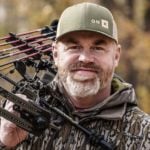 By
By 